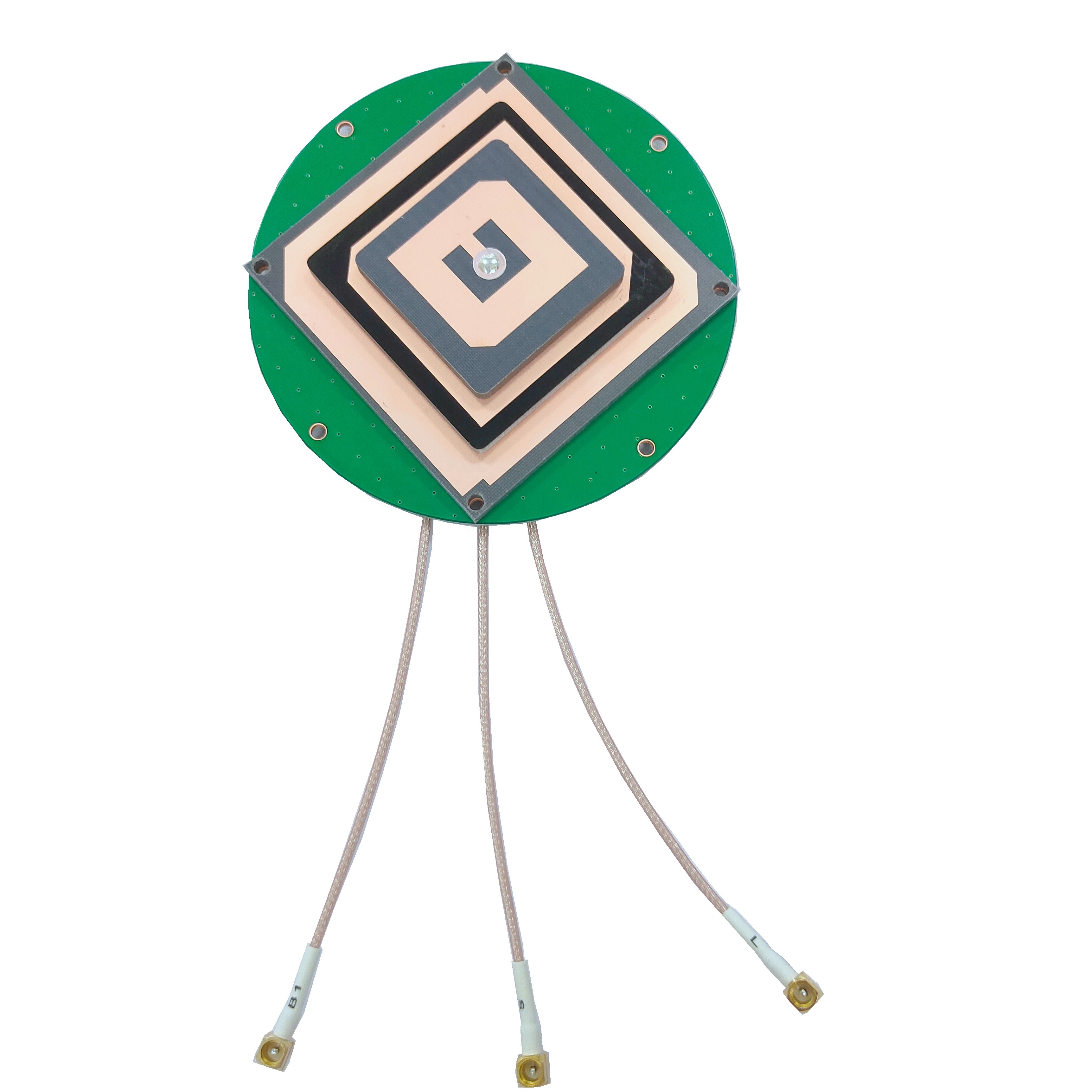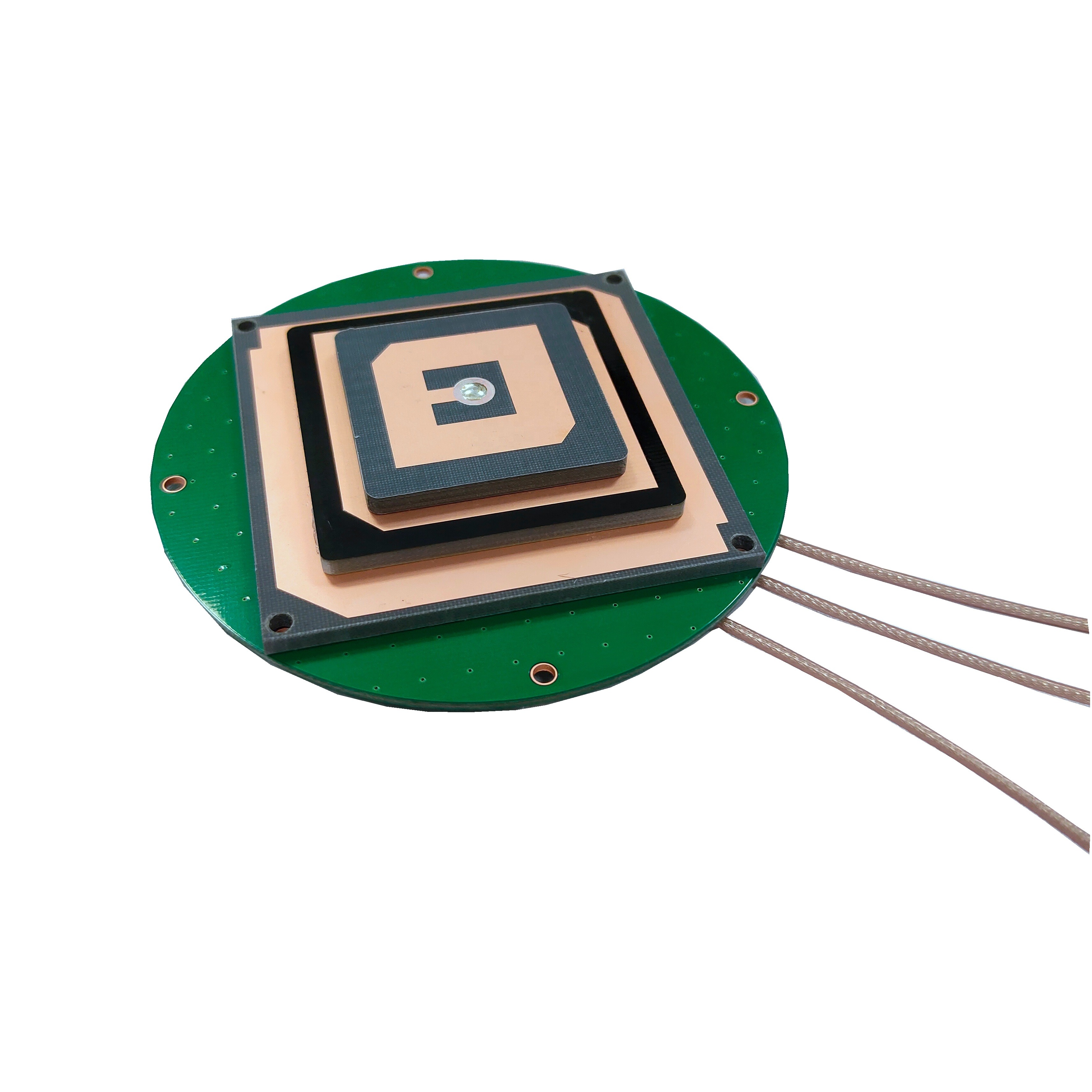The deployment of RTK Precision Surveying GNSS Antennas has moved far beyond its traditional roots in geodesy, enabling a revolution in efficiency, automation, and data quality across a vast spectrum of industries. Their unique ability to provide a stable, centimeter-accurate reference point in real-time is a foundational technology for the modern built environment.
Applications
Classical Surveying and Geodesy: This remains the core application. Surveyors use these antennas for high-stakes tasks like establishing primary control networks, boundary surveys, topographic mapping, and construction layout. The millimeter-level repeatability and long-term stability are essential for legal and engineering purposes. Here, large choke ring antennas are often used on tripods as base stations to provide a rock-solid reference for rover units.
Construction and Machine Control: The construction industry has been utterly transformed. RTK antennas are mounted on bulldozers, graders, excavators, and pile drivers. The machine's blade or bucket position is known in real-time relative to a 3D digital design model (BIM). This allows operators to cut and fill to precise grades without stakes, reducing material costs, rework, and time by over 50% in many cases. The robustness of the antenna is critical in this harsh, vibrating environment.
Precision Agriculture: Farming has become a high-tech enterprise. RTK-guided tractors plant seeds, apply fertilizer, and harvest crops with 2-3 cm accuracy. This eliminates overlaps and gaps, optimizing input use, boosting yields, and reducing environmental impact. Antennas are built into durable housings to withstand dust, chemicals, and the constant vibration of farm machinery.
Scientific and Monitoring Applications: Scientists use these antennas for highly precise monitoring of tectonic plate movements, volcanic deformation, and landslide creep. The antennas are permanently installed at reference stations, often as part of a network (e.g., NOAA's CORS network), continuously streaming data. Their stability over years and across seasons is vital for detecting movements of just a few millimeters per year.
Autonomous Systems and UAV Mapping: While emerging autonomous vehicles may use different form factors, the principle remains. Drones (UAVs) equipped with RTK antennas no longer just navigate; they precisely geotag every captured image and LiDAR point with their exact antenna position. This allows for the creation of highly accurate 2D and 3D models without the need for numerous ground control points, revolutionizing the speed and cost of aerial surveying.
Marine and Hydrographic Surveying: On boats, RTK antennas are used for precise positioning in hydrographic surveys to map riverbeds and seafloors, for dredging operations, and for dynamic positioning systems that allow vessels to hold a precise location despite wind and currents.
Future Trends
The technology continues to evolve, driven by demands for better performance, lower cost, and new applications.
Miniaturization of High-Performance Designs: The goal is to pack the performance of a choke ring into a smaller, lighter form factor. Advances in electromagnetic simulation and metamaterials (e.g., artificial magnetic conductors) are leading to ground plane designs that can offer superior multipath rejection without the bulk of traditional choke rings, making high-precision more portable and accessible.
Tighter Integration and OEM Modules: There is a growing trend towards integrating the antenna, receiver, and an Inertial Measurement Unit (IMU) into a single, compact OEM module. This "positioning engine" simplifies integration for machine manufacturers and enables robust navigation solutions that blend GNSS with inertial navigation for continuous positioning during short GNSS outages.
Focus on Robustness and Reliability for Autonomous Applications: As autonomy moves into construction, agriculture, and logistics, the antenna must be ultra-reliable. Future designs will focus even more on resilience to physical damage, vibration, wide temperature swings, and ensuring constant uptime.
Advanced Interference Mitigation: The radio frequency spectrum is becoming noisier. Future antennas will incorporate more sophisticated filtering and may even evolve towards controlled reception pattern antennas (CRPAs) that can actively nullify interference from jammers or other sources, a critical step for safety-critical autonomous systems.
Lower Cost Through Mass Production: As the market for autonomous machines grows, the volume of high-precision antennas required will increase. This will drive economies of scale, investment in automated manufacturing, and potentially the adoption of new materials, gradually reducing the cost barrier without sacrificing performance for mid-tier applications.
Support for All Current and Future Signals (L-band, LEO): Antenna designs are evolving to cover not only all existing GNSS signals but also new L-band correction services and even signals from Low Earth Orbit (LEO) satellite communication constellations. This will provide greater redundancy, faster convergence, and more robust positioning anywhere on Earth.
The future of the RTK surveying antenna is one of convergence: becoming more integrated, more intelligent, and more accessible. It will transition from being a standalone survey tool to an embedded sensor within a larger ecosystem of autonomous machines and intelligent systems, all relying on its unwavering ability to provide a precise and trustworthy position on our planet.
Conclusion
The RTK Precision Surveying GNSS Antenna stands as a profound testament to the principle that foundation matters. In the sophisticated data chain of satellite positioning, where complex algorithms resolve ambiguities and filter noise, it is the antenna that serves as the unwavering bedrock. It is the critical interface between the analog world of propagating electromagnetic waves and the digital world of precise measurement. Its role is not to compute but to faithfully collect; not to interpret but to accurately present the rawest form of data—the phase of the carrier wave—upon which all subsequent RTK magic is performed.
Through this exploration, we have seen that its design is a masterclass in purpose-driven engineering. Every material choice, from the stable dielectric substrate to the rugged radome, is made to ensure longevity and performance in the field. Every architectural feature, from the stacked patches enabling multi-frequency reception to the sophisticated choke rings annihilating multipath, is meticulously crafted to defeat a specific source of error. The integration of a low-noise amplifier and the rigorous process of anechoic chamber calibration are not value-added features but absolute necessities to achieve the level of precision the market demands.
The advantages it offers are unambiguous: unparalleled phase stability, superior multipath rejection, and the robustness required for professional, day-in, day-out use. These advantages directly enable the centimeter-level accuracy that has revolutionized surveying, construction, and agriculture. However, these capabilities come with inherent challenges: significant cost, considerable size and weight, and a dependency on precise calibration and proper use. These challenges firmly position it as a tool for professionals where the return on investment is measured in accuracy, efficiency, and reliability.
The applications for this technology are vast and growing, from monitoring the slow drift of tectonic plates to guiding autonomous harvesters and construction robots. As we look to the future, the trends are clear. The antenna will become more integrated, smarter, and more compact, finding its way into an ever-expanding array of autonomous systems that will rely on its precise coordinates to navigate and interact with the physical world.
In conclusion, the RTK Precision Surveying GNSS Antenna is far more than a simple receiver. It is a precision instrument, a gatekeeper of quality, and a fundamental enabler of modern precision. While the RTK receiver is the brain that performs the calculations, the antenna is the keen eye that provides the clear vision. It ensures that the promise of centimeter-accurate RTK positioning is not just a theoretical possibility but a practical, reliable, and transformative reality.




































































 Language
Language
 En
En Cn
Cn Korean
Korean

 Home >
Home > 







 18665803017 (Macro)
18665803017 (Macro)













